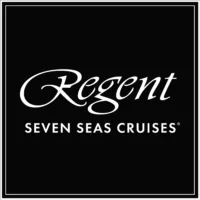
Regent Seven Seas Cruises
Regent promises to deliver The Most Inclusive Luxury Experience, offering an all-inclusive, ultra-luxury experience that is Unrivalled at Sea™.
Guests will be able to explore more than 550 destinations around the world while enjoying the unrivalled space, elegance, and comfort of The World’s Most Luxurious Fleet®. Regent will tend to every detail of their journey from start to finish, so guests can be pampered by the warm, Heartfelt Hospitality™ delivered by the crew.
496
Passengers
365
Crew
1999
Launched
2016
Last refit
28803t
Tonnage
173m
Length
25m
Width
20kts
Speed
8
Decks
USD
Currency
Cruise Itinerary
Ship Details


Regent Seven Seas Cruises
Seven Seas Navigator
As you gaze at Seven Seas Navigator®, imagine what you’ll hear as well. Listen for sounds of happiness like forks clicking on Versace dinnerware, a ball clacking on a roulette wheel, and a martini being shaken to icy perfection.
Cabins
All Prices





















